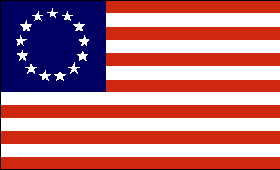The Battle of Great Bridge
December 9, 1775 at Great Bridge, Virgina



|
|
| Strength |
Killed |
Wounded |
Missing / Captured |
| 1000 |
? |
1
|
? |
| |
| Strength |
Killed, Wounded & Captured
|
| 600 |
102 |
|
Conclusion: American Victory
Southern theater, 1775-83
|
|
The Battle of Great Bridge was fought in the area of Great Bridge, which resulted in the end of British Colonial government of the colony.
This battle was responsible for removing Lord Dunmore and any other vestige of English Government for the Colony of Virginia during the early days of the Revolutionary War. Shortly thereafter, Norfolk, at the time a Tory center, was captured and destroyed. A cannon ball fired from the English ship HMS Lord Dunmore was fleeing Virginia on is incased in the wall of St. Pauls Church in Norfolk. That cannon ball remains on display in its final resting place in the southeast wall of the church.
The complete defeat of the British in the Virginia Colony at the Battle of Great Bridge, 7 months before the writing of the Declaration of Independence, was at the time called the Second Battle of Bunker's Hill. It resulted in the capture of Norfolk by the Americans and the bombardment and complete destruction of Norfolk 3 weeks later on January 1, 1776. It ended the rule of the British in Virginia.
Lord Dunmore, colonial governor of Virginia, has, in growing disfavor, retreated from Williamsburg but in Norfolk was considered a "nest of Tories", and Dunmore thought he was making headway against the rebellion by pillaging the plantations of patriots, winning slaves over to his side and seizing printing presses. With just 1 more regiment and a few more battalions, he wrote on the last of November, "I really believe we should reduce this colony to a proper sense of their duty."
On the other side, Gen. George Washington, commander-in-chief of the Continental Army, urged that Dunmore "should be instantly crushed" lest his forces grow. He wrote the president of the Continental Congress from New England: "I do not mean to dictate, I am sure they will pardon me from freely giving them my opinion, which is, that the fate of America a good deal depends on his being obligated to evacuate Norfolk this winter or not."
According to contemporary accounts in the Virginia Gazette, Dunmore, after defeating the opposition at Kemp's Landing moved ten miles south to Great Bridge on the South Branch of the Carolinas. Great Bridge was the shipping point to nearby Norfolk of shingles, tar potash and turpentine from the Carolinas. Finding resistance increasing, he built a stockade on the North (Norfolk) side, removed the bridge planking, destroyed 5 or 6 houses on the opposite shore and fortified the narrow causeway bridge approaches with two 12-lb. cannons.
Col. William Woodford, in charge of the 2nd Virginia Regiment, was gathering forces at Great Bridge of minute men from Fauquier, Augusta and Culpepper Counties, in the western part of the Colony as well as volunteers from Princess Anne and Norfolk Counties. Woodford reported 250 Carolina men arriving under Colonel Vail "composed of regulars, minute men, militia and volunteers." TheVirginia Gazette reported "150 gentlemen volunteers had marched to Virginia from North Carolina on hearing of Dunmore's insolences and outrages."
Dunmore, misinformed of the strength of the opposition, sent sailors from the Otter at Norfolk, "plus some 60 townsmen" on a surprise attack on Great Bridge. In the early morning hours, the column within 15 steps of the American forces before falling mortally wounded. Lt. Travis, in command of the American advanced breastworks, had ordered his handful of 25 men to reserve their fire until the British troops came within 50 yards. The staggered British were rallied under Lt. Samuel Leslie, who was later captured. Col. Woodard's main group, moving through Great Bridge, received a heavy cannon barrage. It was all over, however, in half an hour's time.
Royal authority in the Virginia Colony was at an end. It was a complete rout. The loss of men to the British was reported as 102 killed or wounded, and only 11 of Fordyce's grenadiers survived.
The British retreated to Norfolk. By the time Washington had written the Continental Congress from New England, Col. Woodford was able to report to Edmund Pendleton, president of the Convention at Williamsburg, that he and Col. Robert Howe were in complete command in Norfolk with 1,275 men, and that the Tories and their families had removed themselves to Dunmore's ship, HMS Otter , in the harbor